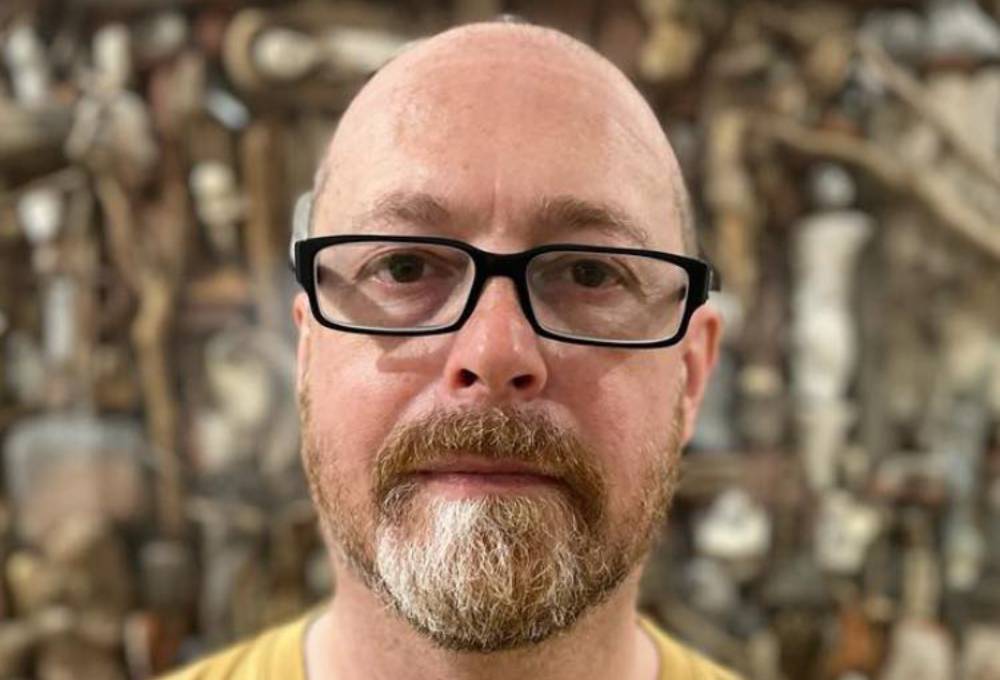Michael Blackburn

Contact
- Email: m.blackburn@kingston.ac.uk
- Location: Kingston School of Art, Knights Park
- Faculty: Kingston School of Art
- School: School of Creative and Cultural Industries
- Department: Department of Critical and Historical Studies
Research project: Exploration into the features and characteristics of cognitive processing within multimodal "concept/puzzle advertisements"
Abstract
This research will develop a new approach for imperative climate change communication by identifying and utilizing the linguistic and visual communication components of incongruity resolution (IR), by unpicking its mental-processing mechanism in advertising texts. IR is a cognitive theory of how humans understand a particular type of humour. IR-based humorous texts consist of an initial incongruous sense that is suddenly flipped over to a second, resolved sense. The incongruity relates to something perceived differently from first expectations, while the resolution is a problem-solving activity that "reconcile[s] the incongruous parts" (Forabosco, 1992, cited by Attardo, 2020:86).
Incongruity Resolution's effects are significant because they often elicit a 'Creative Insight' experience of "sudden illumination imbued with immediate certainty" and can therefore be highly persuasive (Laukkonen et al. 2020:1). For communication designers, a deeper understanding of IR has relevance because it can be used as a potent communication strategy for inducing behavioural-change. Mastering its theoretical underpinnings, practical elements and linguistic processes will inform the development of guidance manuals for IR's application to produce more persuasive communication about sustainable lifestyles, climate, health, and energy (Bevan et al., 2020).
The common denominator of creatively persuasive and award-winning advertising could be IR's humorous effects (Barry, 2010). Advanced understanding of its processes will promote development within the field; providing insight into how it can be used for greater effect across other disciplines, including moving image, 3D and environmental design, music, dance and digital interactivity. My theoretical contribution will be a cognitive linguistic framework for the analysis of advertisements using IR. My practice-based contribution will be a portfolio of tools and guidance for the creation of persuasive communication; a case study implementing this in the development of an environmental campaign; and an assessment of their ability to effect opinion change in audiences.
- Research degree: PhD
- Title of project: Exploration into the features and characteristics of cognitive processing within multimodal "concept/puzzle advertisements"
- Research supervisors:
- Other research supervisors:
Biography
I have spent over two decades as an Advertising Creative Director, Art Director and Designer, mostly specialising in Healthcare and Social Awareness Communication (but also including Consumer and Business-to-Business categories). In short, the job required me to become a ‘mini-expert' on every brand's business, product, service or cause I have ever worked on across many industry sectors. My experience has been global, hired to create 360-degree integrated campaigns across all forms of media, including traditional broadcast (magazines, newspapers, posters, branding, corporate identity literature, billboards, TV ads), digital (websites, display ads, social media videos, apps, games) to ambient and experiential (involving digital interactivity, 3D interior and exterior spaces/environments for events and conferences). Noteworthy agencies that I have been employed by have been Saatchi & Saatchi, McCann Erickson, Leo Burnett, and Havas. This international experience taught me the importance of working with audiences from different cultures to produce culturally relevant persuasive messages.
Areas of research interest
- Incongruity Resolution and Humour Linguistics
- Cognitive Linguistics and Pragmatics (Relevance Theory and Conceptual Metaphor Theory)
- The Neuroscience of ‘Creative Insight'
- Visual and Multimodal Communication (including Multimodal Argumentation)
- Semiotics (Saussure, Peirce, Eco, Social/Visual and Cognitive Semiotics)
- Visual Perception Psychology (including AI and Mental Imagery)
- Art History and Visual Narrative
- Climate-Change Science Communication and Activist Messaging
- Advertising History of Rhetorical Strategies and Techniques of Persuasion (i.e. "Appeals")
- Pedagogy of Graphic and Persuasive Design Practice (including Illustration and Visual Storytelling)
Qualifications
- 1st Class Honours Degree in Illustration, Harrow College of Art & Design, Westminister University
- Postgraduate Diploma in Communication Design, Central Saint Martins, UAL
Funding or awards received
- AHRC TECHNE Studentship
